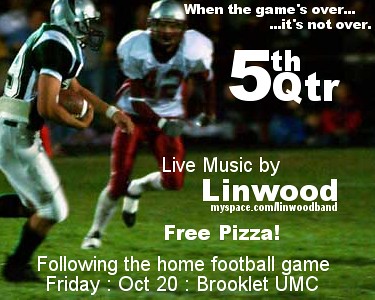This post is part of a series. For others in this series, check here.
Think about a bug flipped over on it’s back, legs in the air frantically waving, trying to find some traction to scurry away. Motion doesn’t always mean progress.
Within an organization, what we’re looking for is motion in a particular direction. When planning for a ministry organization, you’re not just looking for more stuff to do, more programs or activities to keep people busy or entertained. You’re hoping to lead people in a particular direction –towards relationship with Jesus.
Just as getting in a car and driving the wrong direction to get somewhere isn’t helpful, it’s also unhelpful to offer programs that don’t lead people toward the end goal. When planning for a ministry organization, before you start anything at all, make sure it takes you where you want to go. If you begin with the win in mind, then you can begin by looking at how programs fit together so they lead people down a certain path and in a certain direction.
The second practice in this series helps to begin generating momentum in a particular direction through intentional programming. We’ll call this practice, "Think Steps, Not Programs."
Instead of creating lots of individual programs, begin thinking of each program as a step leading people towards that eventual goal, thinking of how those pieces fit together to move people in that direction, thinking of where you are wanting to lead people.
Often churches approach ministry from a ‘needs’ based philosophy: "What is the need?" and "How do we meet that need?" This isn’t necessarily bad, but can easily lead to lots of busy-ness that doesn’t particularly aim at the goal. This ‘needs’ based approach may even lead to lots of good activities, but they may be activities that distract from the overall win rather than lead people towards it. Meeting felt needs may promote bigger numbers, more attendance, or even a bigger budget, and all of these things look good, but may only be surface deep. The idea is having a strategy that helps in moving people in a process toward a maturity in Christ.
A more strategic approach to programming would be to ask the questions, "Where do we want people to be?", and "How do we get them there?" Ministry, then, isn’t trying to fill people’s time with busy-ness, but instead is about creating environments that lead people toward the win and finding ways to engage people in those environments. This helps aim at growth, progress, and moving deeper in a relationship with Christ.
So that’s the basic idea of this practices: beginning to think of environments in terms of steps leading toward a defined goal, not just a buffet of programs designed to keep everyone busy. Here are a few steps toward how to make that happen.
1- Define where you want people to be, where you want people to end up.
What’s the environment you hope for everyone to engage? Perhaps you want to ask, "What’s the best environment for life change to take place?" If you think that’s some small group format, then that may be where you lead people. If you think the goal is to have people participating in a corporate worship service, then you may create steps that lead in that direction.
2- Steps need to be easy, obvious, and strategic.
The environments that serve as steps for an individual’s growth and development must have some key qualities in order to be effective. Steps must be easy; they must be able to make the step. It must be obvious; people need to see it and we need to communicate it. Steps need to be strategic; they need to lead people where they need to go.
3- Lead people toward ONE goal.
Beginning to think steps, not programs helps to ‘trim the fat’ if they are leading toward ONE goal. There’s an economic efficiency because the costs are streamlined and the activity within the organization is focused. For people to move from A to B, you don’t create multiple B’s to accomplish the goal. This confuses the person coming through the process, and creates hassle and complication within the organization. Once you’ve identified the best environment for people to experience the win, establish a process that leads to that specific environment.
So, let me offer a few questions to stir the thinking:
How have you seen this fleshed out? Does your ministry have a clearly defined, or structured process for leading people toward maturity in Christ? Is a ‘buffet’ approach to ministry really a hindrance or can it be helpful? What are some ways to connect the steps, to help make them ‘easy, obvious, and strategic’? What other benefits might ‘thinking steps, not programs’ offer?
Join the discussion in the comments section below.
Technorati tags: 7 practices, think steps not programs
 Happy birthday [dangerous wonder]. Happy birthday.
Happy birthday [dangerous wonder]. Happy birthday.
 This is the first in a series about the book
This is the first in a series about the book  I had full plans to begin a series on
I had full plans to begin a series on 
